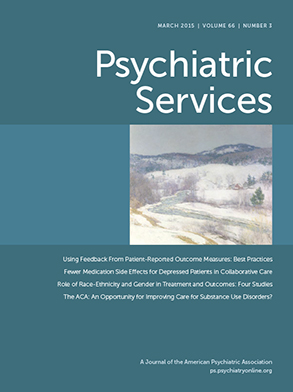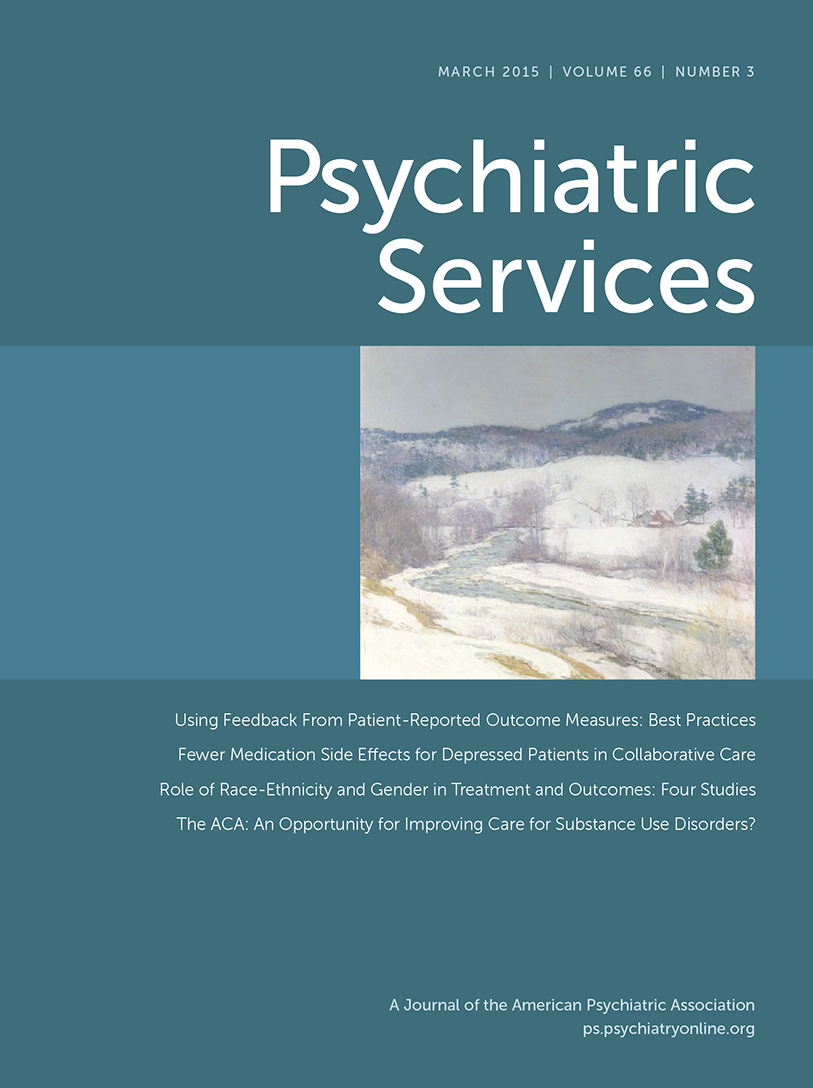American Psychiatric Foundation updates employer guide to parity: The American Psychiatric Foundation (APF) and its Partnership for Workplace Mental Health have released an updated version of the
Employer Guide for Compliance With the Mental Health Parity and Addiction Equity Act that details how the law is affected by provisions in the Affordable Care Act (ACA). The MHPAEA requires group health plans that cover more than 50 workers to cover mental health and substance use disorders on par with coverage for general medical conditions if those plans offer coverage for mental health and substance use disorders. The MHPAEA and its implementing regulations are complex, and the guide is designed to help employers ensure that their health plan vendors are in compliance. Employers are liable for noncompliance and subject to potentially significant penalties—as high as $100 per member per day of noncompliance. New regulations under the ACA that pertain to parity and that are described in the guide include disclosing plan information and providing for internal review and external appeals. The 48-page guide, which was prepared by Milliman, Inc., is available on the Web site of the Partnership for Workplace Mental Health (
www.workplacementalhealth.org/ParityGuide15).
National Council makes the business case for behavioral health treatments: Two publications developed by the National Council for Behavioral Health make the business case for ensuring that Americans with mental disorders and with substance use disorders receive effective treatments. The publications, which cite findings from the latest epidemiological and actuarial research, grow out of an emerging awareness that solutions to the quality and cost problems in U.S. health care must address behavioral health needs. Treatment costs for patients with chronic medical conditions are already high, but costs for those with comorbid behavioral health conditions are two to three times higher. In 2012, care for this population totaled an estimated $293 billion, according to research cited in the business cases. The two cases outline straightforward, cost-saving solutions that seek to close the gap between those needing behavioral health care and those receiving it. By better integrating medical and behavioral health care and expanding use of evidence-based practices to coordinate care, providers can treat mental illnesses and addictions, as well as chronic medical conditions.
The Business Case for Effective Mental Health Treatment and
The Business Case for Effective Substance Use Disorder Treatment are available on the National Council Web site (
www.thenationalcouncil.org/business-case-mental-health-substance-use-disorder-treatment).
SAMHSA and MacArthur Foundation initiative to improve outcomes for justice-involved youths: The Substance Abuse and Mental Health Services Administration (SAMHSA) and the John D. and Catherine T. MacArthur Foundation have announced their latest initiative to improve diversion policies and programs for youths who become involved with the criminal justice system. Up to four states will be selected to participate in the 2015–2016 program. The current initiative builds on previous efforts undertaken by the two organizations via their collaboration in the Policy Academy–Action Network, in which 12 states have participated in past years. The initiatives bring together SAMHSA’s Policy Academy mechanism and the MacArthur Foundation’s Models for Change Action Network strategy, in which participating states learn about new policy and practice approaches and implement similar innovations. “Thanks to the work of the Policy Academy–Action Network meaningful reforms have happened in juvenile justice programs across the country, allowing the youth in contact with the juvenile justice system a greater hope for a better outcome,” said SAMHSA Administrator Pam Hyde in announcing the new initiative. “I look forward to seeing the innovative reform approaches this next group of participants can bring to ensuring that we are providing our youth with opportunity for success.” The 2015–2016 “Improving Diversion Policies and Programs for Justice-Involved Youth With Behavioral Health Disorders: An Integrated Policy Academy-Action Network Initiative” is being be coordinated by the National Center for Mental Health and Juvenile Justice at Policy Research Associates, Inc., and the Technical Assistance Collaborative, Inc. More information is available on the MacArthur Foundation Web site (
www.macfound.org).
Kaiser Foundation brief examines post-ACA uninsured population: Coverage provisions of the ACA, which became effective in January 2014, were designed to substantially reduce the uninsured population. As 2014 drew to a close, the Kaiser Family Foundation conducted a telephone interview survey with a representative sample of 10,502 nonelderly adults to create profiles of those who continued to lack coverage. By mid-December, 11 million adults had become newly insured under the ACA, and roughly 30 million remained uninsured. Most of the uninsured adults (63%) said that that they did not try to get health insurance from
HealthCare.gov or their state marketplace or Medicaid program. On the basis of survey responses, it was estimated that about half (48%) the uninsured adults were eligible for assistance under the ACA, including 30% who were eligible for marketplace tax credits and 18% who were eligible for Medicaid. Despite the intense national focus on problems with
HealthCare.gov and other sites, logistical issues did not appear to be a leading reason for going without insurance in 2014. The main reason cited by respondents was the cost of insurance. Nearly three in ten (29%) uninsured adults who sought ACA coverage said that they did not enroll because the coverage was too expensive. Among those who cited cost as a reason for not having ACA coverage, 42% appeared to be eligible for marketplace subsidies. However, an estimated 15 million uninsured adults were ineligible for any assistance under the ACA, including nearly four million in the “coverage gap”—those in states without expanded Medicaid whose income level made them ineligible for Medicaid or for marketplace premium tax credits. The 13-page issue brief,
Adults Who Remained Uninsured at the End of 2014, is available on the Kaiser Web site (files.kff.org/attachment/issue-brief-adults-who-remained-uninsured-at-the-end-of-2014).
PCPCC’s annual review of evidence on medical homes: The Patient-Centered Primary Care Collaborative (PCPCC) has released its annual review summarizing results from primary care patient-centered medical home (PCMH) initiatives that were implemented from September 2013 through November 2014. According to research cited in the review, the PCMH movement is growing. Between 2009 and 2013, PCMHs supported by payment incentives increased from 26 to 114, the number of patients served rose from about five million to almost 21 million, and the number of states embracing PCMH transformation grew from 18 to 44. (This growth can be tracked on an interactive U.S. map introduced by PCPCC in 2014 [
www.pcpcc.org/initiatives].) The 2013–2014 evidence review aggregates cost and use data from 28 publications, the largest number of PCMH evaluations published in a single year (14 peer-reviewed studies, seven state PCMH program evaluations, and seven industry reports). Accumulating evidence links this model of care with reductions in costs and unnecessary service use, improvements in population health and preventive services, increased access to primary care, and growing satisfaction among patients and clinicians. The authors of the review call for greater investment in primary care to sustain the PCMH model, noting that payments to primary care providers represent only 4% to 7% of total health care spending. The report concludes with commentaries by guest experts on five areas integral to the future development of enhanced primary care and the PCMH: integrating services; providing financial support for enhanced primary; developing the primary care workforce to embrace all members of the team, including patients and caregivers; engaging patients, consumers, and the public in PCMH transformation and quality improvement; and embracing the potential of technology to support this model of care. The 48-page review,
Impact on Cost and Quality: Annual Review of Evidence, 2013-2014, is available on the PCPCC Web site
(www.pcpcc.org/resource/patient-centered-medical-homes-impact-cost-and-quality).
NAMD overview of key issues in Medicaid reform: In recent years, state Medicaid programs have undertaken a range of reforms to improve quality and enhance program efficiency—from incremental changes in payment mechanisms to large-scale health system reorganization. Although reform initiatives and systems vary by state, a new publication from the National Association of Medicaid Directors (NAMD) singles out three cross-cutting issues that Medicaid programs face as they introduce reforms: incorporating the perspectives and priorities of providers into reform design and implementation; finding adequate resources—notably staff with the necessary skills—to develop and oversee reforms; and supporting reform “infrastructure” at all levels that allows realigned incentives to work effectively. Developing capacity is labeled “states’ foremost hurdle” in reform implementation. States develop capacity through expanding or modifying staff resources or employing contractors to meet the often intensive requirements. The issue brief describes some of the new functional roles that are critical: payment analysis and redesign, quality measurement and improvement, stakeholder relations, monitoring and program integrity, and evaluation. The five-page brief,
Driving Innovation on the Ground: Key Issues for State Medicaid Agencies in Payment and Delivery System Reform, is available on the NAMD Web site (
medicaiddirectors.org/sites/medicaiddirectors.org/files/public/driving_innovation_0.pdf ).
Commonwealth Fund’s annual insurance survey documents ACA’s effects: Results from the
Commonwealth Fund Biennial Health Insurance Survey, 2014 indicate that the ACA’s subsidized insurance options and consumer protections reduced the number of uninsured working-age adults (ages 19–64) from an estimated 37 million people in 2010, or 20% of this population, to 29 million by the end of 2014, or 16% percent. The survey—the longest running nonfederal survey of U.S. health insurance coverage—has been conducted each year since 2001, and for the first time it found declines in the number of people who reported cost-related access problems and medical-related financial difficulties. The number of adults who did not get needed health care because of cost declined from 80 million in 2012, or 43% of the working-age population, to 66 million in 2014, or 36%. The number who reported problems paying medical bills declined from an estimated 75 million in 2012 to 64 million in 2014. Young adults (ages 19–34) made the greatest gains in coverage of any age group. The uninsured rate among young adults was found to be its lowest in 14 years, falling from 27% in 2010 to 19% in 2014. Striking improvements in insurance status were also found among low-income adults. The uninsured rate among people with incomes under 200% of the poverty level ($47,100 for a family of four) declined from 36% in 2010 to 24% in 2014. Gains were also noted across racial and ethnic groups. Among non-Hispanic whites, the percentage of uninsured fell from 15% in 2010 to 10% in 2014. Declines over the same period were from 24% to 18% among African Americans, and from 39% to 34% among Latinos. The 16-page issue brief,
The Rise in Health Care Coverage and Affordability Since Health Reform Took Effect, is available on the Commonwealth Fund’s Web site (
www.commonwealthfund.org/∼/media/files/publications/issue-brief/2015/jan/1800_collins_biennial_survey_brief.pdf?la=en).

